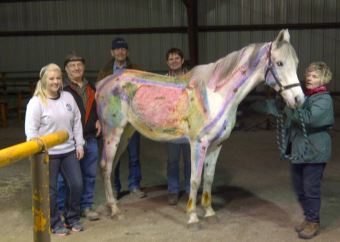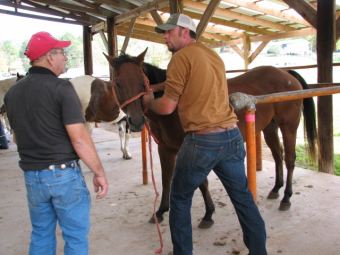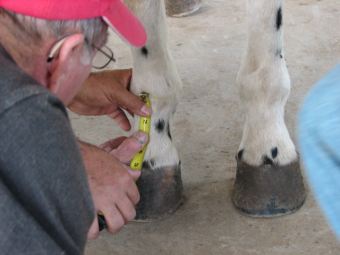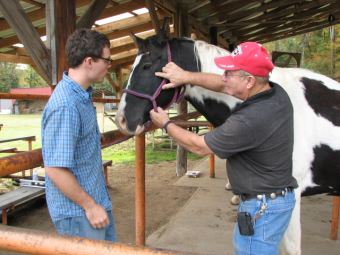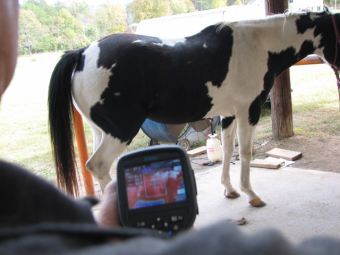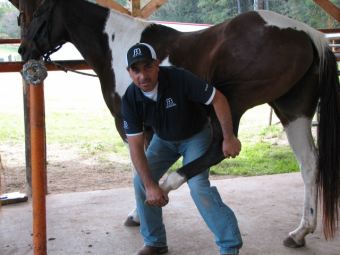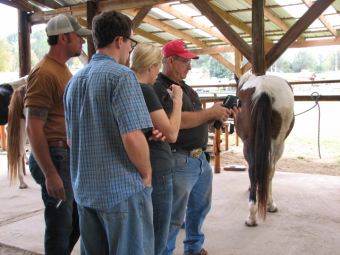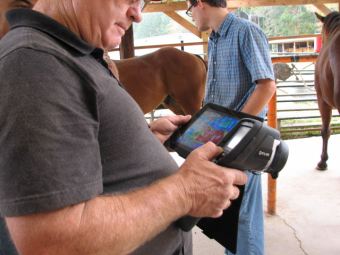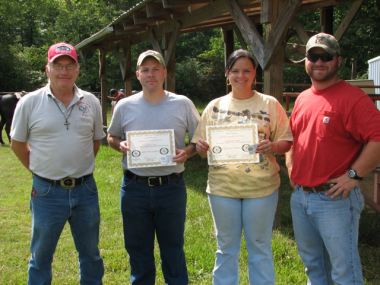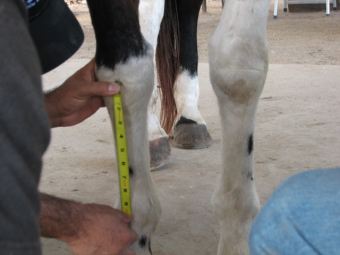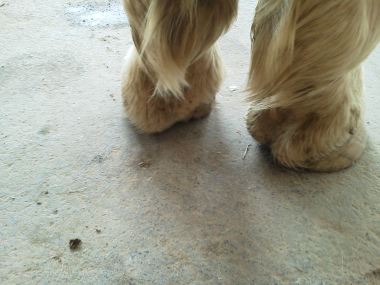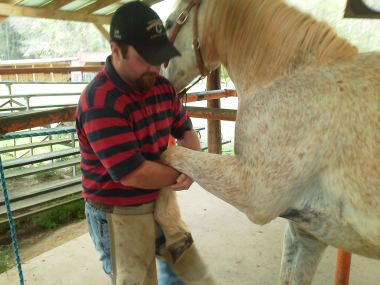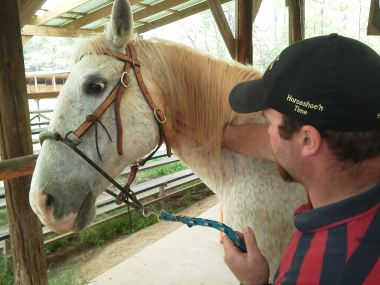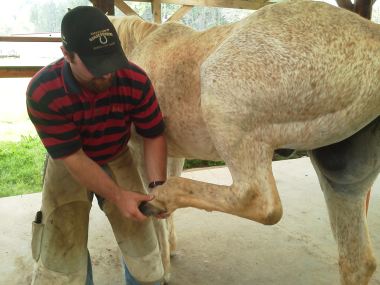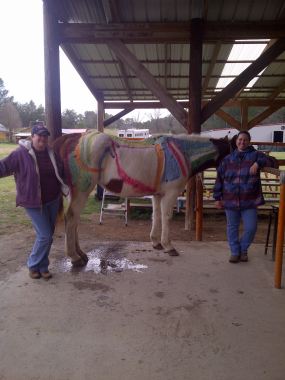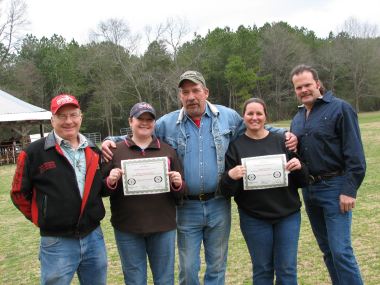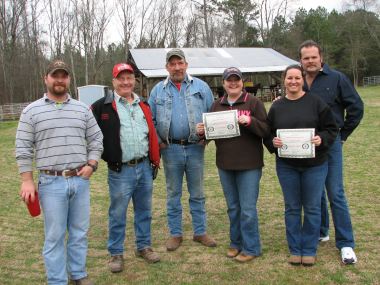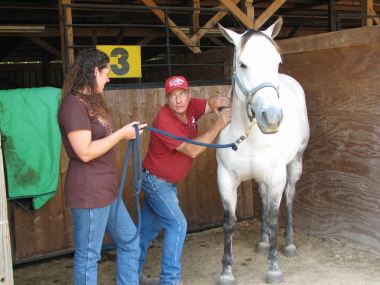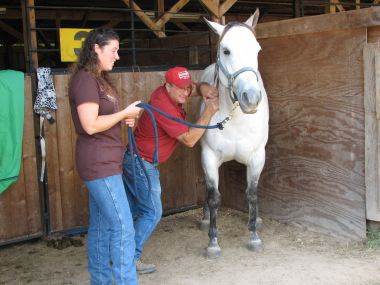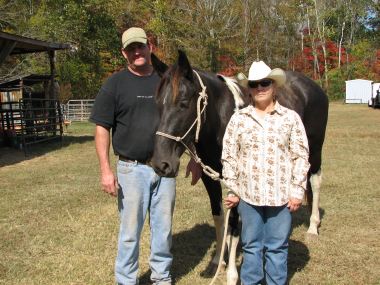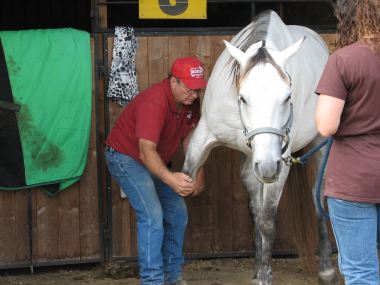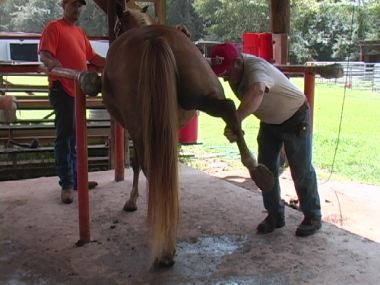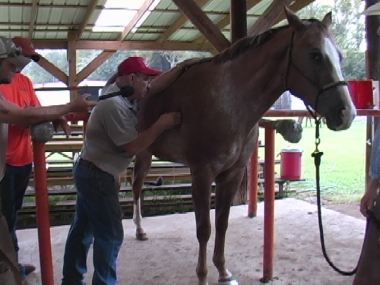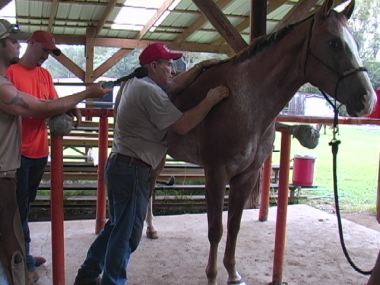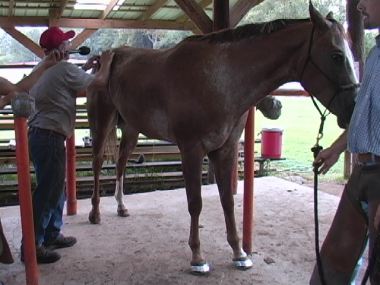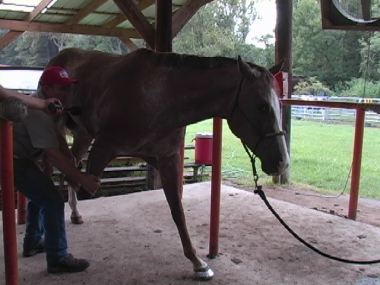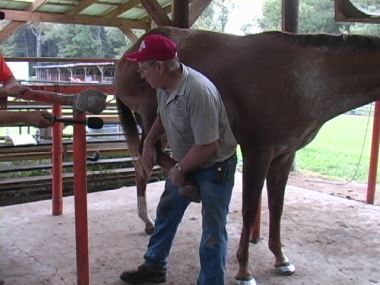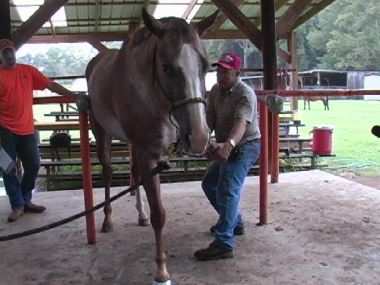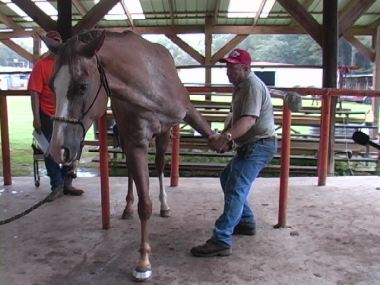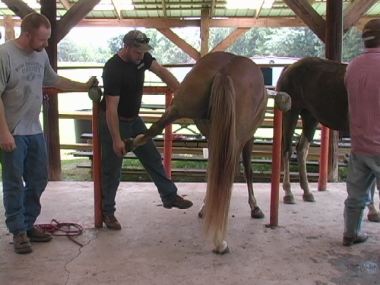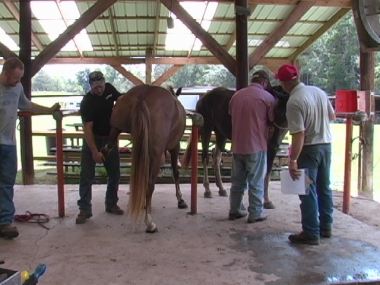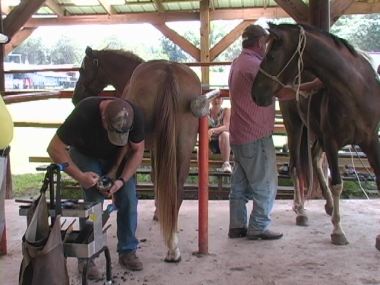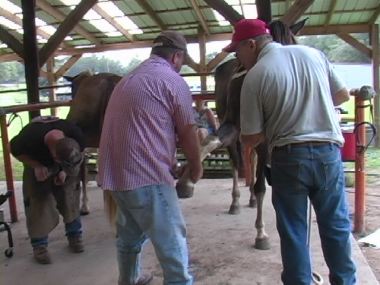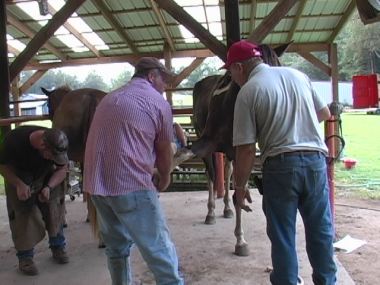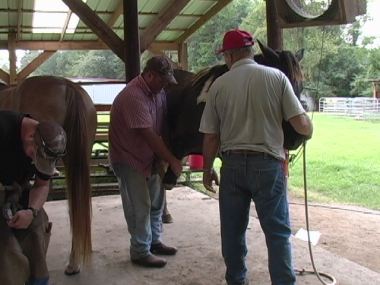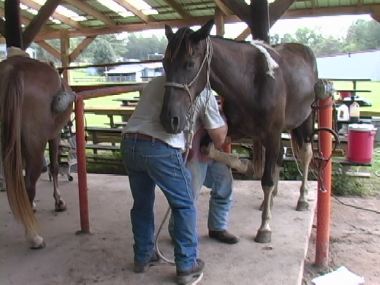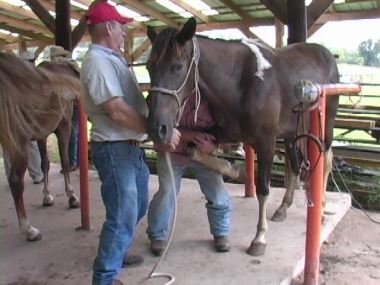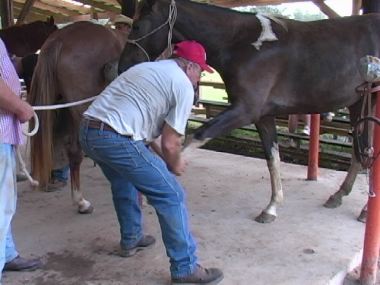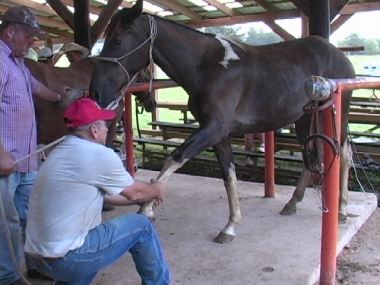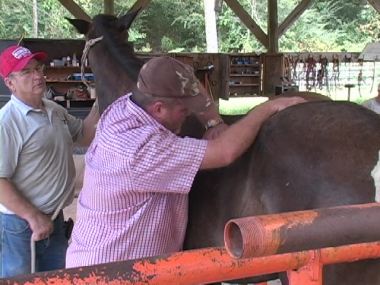Horse Pastures, Cool Weather And Laminitis Explained
Horse Pastures, Cool Weather and Laminitis explained
Cool spring weather brings in new green grass but what about the fall? Those cool weather days also bring in new green grass. So how does that relate to the horses’ diet?
Most horse owners know about the dangers of eating too much new spring grass, but have you thought much about the fall weather grass? Yes, horses can founder on both. With the abundance of rain and sunshine this year, you may find yourself mowing your lawn every 5 days. How about your pastures?
Fall is the time to fertilize and lime your pastures. If you do, keep your horses off for several weeks, not just days. We are thankful for all that good green grass, but with it comes limitation for horse grazing.
It has been known for many years that lush pastures can cause laminitis and founder in susceptible horses. According to a popular farrier publication editor, Fran Jurga, scientists have identified fructans as the culprit in grass that causes horses to founder.
Explanation:
During the day, plants carry on photosynthesis and produce sugar. In grasses, these sugars are stored as carbohydrates such as sucrose, fructose and fructans. During sunny days, horses can be grazing on pastures that are high in carbs. At night, the plants use the carbs to produce plant tissue. Therefore, carb levels are lowest at dawn. Fructans are a form of carbohydrate stored by grass. Seeds store energy as starch, grasses store energy as fructans.
Problems can arise when stress slows the growth of the grasses and the plants do not use the carbs produced during the day. This condition can develop during the SPRING (and FALL), when falling nighttime temps and frost can shut down the plants. If the frosty nights are followed by warm, sunny days, fructan levels can accumulate quickly in the grass blades. Grazing grasses high in fructan levels can trigger a situation in horses very similar to carb overload caused by overeating grain. Increased carb and fructan levels can set off a series of metabolic disturbances in the horses’ intestines, potentially resulting in colic and laminitis. Until more research is done, it appears that fructans are the likely cause of grass induced laminitis or founder in horses.
Courtesy of the Tribute Equine Nutrition:
Laminitis is the inflammation of the sensitive structures in the hoof called the “lamellae.” The lamellae hold the coffin bone tight within the hoof horn. This condition is extremely painful and can lead to rotation of the coffin bone known as founder. A common cause of laminitis is overconsumption of pasture grass, especially when the grass is actively growing, typically in the spring or after a good rain – AND IN THE FALL. Nutritional causes are related to high intake of sugar and starch also from grain mixes high in cereal grains and molasses.
Minimizing the horses’ sugar and starch per meal is the best way to prevent or manage laminitis. Once a horse has signs of laminitis, nutrition will always be an important factor in continuing a long healthy life.
Dr. Dan, the Natural Vet of Tennessee describes it this way:
Just so you also fully understand – molasses IS SUGAR. Both cause insulin spikes, subsequent insulin resistance from over-production by the body, hypothyroid, Cushing’s horses, etc. Sugar highs and sugar lows are the culprits. Feeding corn and sugar at the morning meal is like us eating donuts and candy for breakfast. These high sugar levels wear the pancreas out. The pancreas produces insulin to handle the sugar and then later in the day, the sugar low causes tremendous stress on the body because the body is starving to death. This hypoglycemia also wears out the adrenals (glands that handle stress) and eventually hypothyroidism, Cushing’s (from over production of adrenal glands), and laminitis, as well as metabolic issues of all types can results. Heck, the body is “just flat worn out” from the stress.
All commercial feeds are produced to “hit the middle of the road’ when it comes to vitamin and mineral fortification.
Buck McColl of Mobile Milling Bio-Zin:
Read your feed tag carefully. Have your pasture soil tested. Compare the quality of your pastures to what your horse really needs in a supplement. Ask your farrier about your personal horse’s hoof quality.
From the Farriers’ National Research Center
Some horses react to all the above, and some don’t. You need to watch out for those easy keepers who seem to always be heavier. Going back to helping the hooves stay dry, put your horses in a dry lot or stalled overnight, let out about noon till 9pm or dark and they will have better hooves and stay on a better-balanced diet as well.
We offer a Nutritional Information Class and DVD for our farrier students and horse owns are welcome. The information comes to us from many Professional Equine Nutritionists who study the subject for living. It is part of our daily business, helping horses stay healthy with healthier hooves to stand on.
After all…”A Healthy Horse = A Happy Owner”
www.farriersnationalresearchcenter.com Villanow, Georgia (706)397-8909 for appointments
Check out our other “Healthy Hoof Care Articles for Horse Owners”
Saddle Fit Class
Our Farrier Education includes clinics on "How To Better Serve Your Customers" and improve your overall horse knowledge. Link Casey, offered a "Saddle Fit Class" for a ladies riding club. Enjoyed by all who were already experienced riders with good horses. One needed an all new saddle & pad to fit properly and others just needed an adjustment or two. The infrared FLIR camera used showed the 'inside' of the story. What might be blamed on shoeing could actually be a saddle fit problem and vica-versa.
Click here to check out slideshows of the course!
Six Simple Steps for Controlling and Exercising your Horse
Not every horse can be an all-around horse, but with the training program utilized by Dan Marcum, the ultimate goal is to produce a horse that is calm, willing, supple and able to perform well in whatever discipline he is suited for.
Many of the horses started with Marcum can easily walk, trot and canter with control at the end of 30 days. In the next month, the "Six Warm Up Exercises" are introduced Marcum has developed a series of movements that teach the horse balance and lateral work. Dan’s Equine Flexion Therapy (EFT) aids in the overall wellbeing and performance of each horse. He has been very successful and appreciated by his clients !
Step 1: Walk on A Circle
The horse should travel in a large circle with both front and back feet traveling in the same track. All angles of the steps should be the same. The key is to use inside pressure with a dominant outside rein and gentle rhythmic tugs to keep the head down. The goal is to raise the horse's back, lower his head, and turn with the outside rein.
Step 2: Bend to the Inside
Bend the horse until the head and neck drop and the nose comes in slightly at a 30-degree angle to the circle. Use a soft rein, with the horses' legs staying on the circle. The key is to use the inside leg pressure with the dominant inside rein pulling toward the rider's inside hip. The goal is to get the horse flexible and obedient to the aids.
Step 3: Double Circles
Begin with step 2, and then push the haunches to the outside of the circle. The front legs travel on the circle, the back legs on a slightly larger circle. The key is to use the inside leg pressure behind the girth, with a dominant inside rein pulling toward the rider's inside hip. The goal is to encourage the horse to reach under more with his inside hind leg and move his legs laterally.
Step 4: Uni-lateral Leg Yield
Begin with step 2, and then push the horse so he is leading with his outside shoulder into a larger circle. The key is to use the inside leg pressure while moving the inside rein to the rider's outside shoulder. The goal is to keep the horse flexible and obedient to the aids.
Step 5: Bi-lateral Leg Yield
Begin with step 1, and then push the horse laterally out, evenly on the circle. The key is to use the inside leg pressure with equal reins moving slightly to the inside. The goal is to collect the horse and make him obedient to aids.
Step 6: Hindquarter Circles
Begin with step 1, and then turn the horse so that the haunches remain in a small circle, yet the shoulders rotate around. The key is to use the outside leg pressure behind the girth with a dominant outside rein. Keep the inside leg off the horse. The goal is to make the horse obedient to aids.
These exercises help build a solid foundation for the horse. They are also an excellent way for a new rider to learn how to control their horse and how much rein or leg pressure is needed for certain maneuvers.
Worth A Reprint! The BWFA National Business News Bulletin Fall 2000
How The FNRC & School Was Started
We Salute ALL VETERANS!
Of all Military Branches & of all U.S Wars in recognition of
Veterans Day, November 11th.
THANK YOU FOR YOUR SERVICE!
Equine Dentistry, RESERVE A SPOT FOR YOUR HORSE!
Friday, October 13th 9-Noon. Schedule your horse today! ($100 per horse)
God Bless America!
https://www.youtube.com/watch?v=UMdkcTmPS2U
Difference between Thrush and Canker
KNOWING THE DIFFERENCE BETWEEN THRUSH AND CANKER: A MATTER OF LIFE OR DEATH.
From the Farriers' National Research Center & School. Dedicated to providing education on hoof care and shoeing for horse owners and continuing education for farriers……
The Swan Center Case - “Tennessee”:
“Tennessee,” a 14-year-old Appaloosa gelding is one of 40 horses residing at the Swan Center Monastery in Marble Hill, Georgia. Many of the monastery's horses come from rescue situations and require special handling and care. Some are too old and debilitated to ever be ridden again, but most fully recover their health. These horses are the foundation of the various riding programs which the monastery offers for children and adults, mentally and physically challenged individuals, and the elderly. Tennessee” has been a key player in these programs, and a favorite of the summer camp children. He has a humorous personality, a laid back nature, and can be trusted to go anywhere, and face anything in a calm, relaxed manner.
Tennessee has white hooves and he is prone to thrush, so we did not think it was unusual when this condition appeared one spring, after a particularly wet winter. All four feet were affected, and the rear hooves were much worse than the front. We treated it accordingly, using several different thrush remedies, each one stronger than the last. He did not respond to the usual treatments, so we contacted our Vet to see if anything else could be done. His recommendations did not correct the situation. Over a period of a year we contacted several vets and even called the University of Georgia, to see if anyone had any answers for us. In spite of all of our efforts, the frog became extremely soft and spongy and bled easily. The infection went so deep that the hoof wall started to break down. It became progressively worse until almost a third of his hoof was gone. None of the professionals we contacted could come up with any solution other than putting the horse down.
I, along with other monastery residents, met to discuss Tennessee's condition, and to brainstorm about possibilities we had not yet considered. We had had so much experience with bringing horses back from the brink of death. We could not accept that there was nothing that could be done to save such a wonderful soul as Tennessee.
The Headmaster suggested that we call Ralph Casey. She reminded us of what a wonderful resource he had been in the past - knowledgeable of horse shoeing information no one else seemed to have. I had met Ralph many years ago when I went to his horse shoeing school so I could learn to take care of our horses personally. I remembered how much I had enjoyed and appreciated those classes. They enabled me to keep our horses feet healthy and saved us countless dollars, allowing us to do our own shoeing.
I called Ralph and described Tennessee's condition. It took Ralph about a minute to sum up the situation. He said, "He's got canker…….this is what you need to do." Needless to say I was elated to find someone who actually knew what we were dealing with and how to treat it. We brought Tennessee to the Farriers' National Research Center. Ralph evaluated Tennessee and suggested that we focus on getting the back hooves sound first, as they were the most life threatening at the time. He proceeded to cut out all the dead frog and sole. The hooves bled profusely, but Ralph was unconcerned. He gave us the program of treatment, described below, minus a few special topical solutions that Ralph said only specialist should use. Our stable manager, Suzanne Jones, followed this program to the letter.
- RUN THE HORSE IN THE ROUND PEN WITH A SAND BASE, TWICE A DAY (STARTING wITH 15 MINUTES EACH SESSION AND INCREASING A FEW MINUTES EACH DAY UNTIL REACHING 30 MINUTES EACH SESSION)
- AFTER EACH SESSION MAKE SURE TO CLEAN OUT ALL THE DIRT IN THE HOOF WITH A GARDEN HOSE FITTED WITH A NOZZLE SO YOU HAVE SOME PRESSURE.
- AFTER THE HOOVES ARE CLEAN, PLACE A 4X4 GAUZE PAD COATED WITH NITROFURAZONE AND CRUSHED SMZ TABLETS (2 PER HOOF) DIRECTLY ON THE AFFECTED AREA. WRAP WITH MORE GAUZE AND VET WRAP TO KEEP THE CRUSHED TABLETS IN CONTACT WITH THE HOOF.
- GIVE 10 SULFAMETHAZONE ORALLY 1 TIME PER DAY. THIS CAN BE CRUSHED UP IN THEIR FEED, OR CRUSHED AND MIXED WITH WATER IN A SYRINGE TO PLACE DOWN THE THROAT LIKE USING A PASTE WORMER.
- KEEP THE FEET COMPLETELY DRY FOR THE DURATION OF THE TREATMENT.
- AFTER 90 DAYS OF CONTINUED TREATMENT, KEEP FEET CLEAN AND PICKED AND TREAT WITH THRUSH TREATMENT LIKE HOOF-SAVER
The results seemed miraculous. We saw immediate improvement and within six months, the rear hooves were back to normal, and we were able to begin treatment on the front hooves. Tennessee was soon back in action, entertaining the kids with his mischievous antics, and providing them with hours of riding pleasure. What could have been a tragic ending to the life of a much-loved horse, turned into a tremendous learning experience for everyone. We have Ralph Casey and the Farriers’ National Research Center to thank for keeping Tennessee with us. We deeply appreciate Ralph and the Research Center for the contribution made to farrier research and equine education.
The right hind hoof showing the bulge at the heels and the severe deformity of the hoof described as canker.
The right hind hoof with o visible signs of canker remaining. This was taken prior to trimming to show the amount of good solid, healthy foot growth.
This is the left hind hoof, side view with canker.
The left hind hoof with the same successful results, before trimming
Examining the front hooves, we found the canker to be in the beginning stages so we immediately cut away what we could and put the horse on the same daily routine for another three months. Notice what a small area on the front hoof is diseased and since we caught it in time it will not develop into the ugly mess as in Photo #1.
THIS IS SOMETIMES THOUGHT OF AS "JUST THRUSH" BUT A CERTIFIED FARRIER SHOULD KNOW THE DIFFERENCE. IF YOU ARE CONCERNED ABOUT A HORSE HAVING REOCCURRING THRUSH THEN WE CAN ONLY ADVISE YOU TO BRING IT TO THE RESEARCH CENTER FOR A FREE EVALUATION AND ADVICE. WE CAN GUARANTEE AN IMPROVEMENT.
Since the first photo of this canker appeared in articles, we were flooded by requests for additional information on the treatments. Most horse owners are willing to work with their farriers but nearly all of them want to object to exercising the horse in the deep sand based round pen for the recommended time. The horse is sore and they think it is cruel. The horse may limp or give a little, but as time goes on, they will almost look forward to it because it begins to feel good. The sand helps to grind out the canker and is vital in the complete removal of this disease. I formulated this procedure to help relieve the weekly cutting away of the growth, which was good for the horse and me and less expensive the owner. I have always emphasized that owners should fully understand the importance of maintaining the lower limb and hoof area and to work with their farriers. I also promote continuing education and certification for all working farriers. In this particular case, this horse would not be sound or even alive today without the daily dedication shown Suzanne, the stable manager.













